Personal Flotation Device (PFD) Rules & Regulations
Personal Flotation Devices, also called life jackets, are a key element of boating safety. However, not just any life jacket will protect you properly. It is important to use a PFD that is U.S. Coast Guard approved and in good condition. Here’s how to tell if your PFD meets USCG regulations and boater safety standards.
Life jacket labels
To find out if a personal flotation device is approved by the USCG, check the label. The label will also tell you:
- What type of life jacket it is
- Which activities you can use it for
- The size according to the weight of the person wearing it
- The size according to the age of the person it is made for (child or adult). Remember, adult sized life jackets may not work for children.
- How to wear it correctly
- How to maintain the PFD (cleaning instructions, etc.)
Remember, a poorly maintained life jacket may not work, and once you’re in the water, it’s too late to find out. As a general rule, foam-filled lifejackets should be tested once a year, and waterlogged or faded lifejackets should be thrown out.
Using a PFD incorrectly (for example, on a smaller or larger person than it was made for) is illegal and can result in serious penalties and even death.
If your personal flotation device does not have a label, don’t use it!
U.S. Coast Guard approved life jackets
Personal flotation devices that have been approved by the United States Coast Guard meet specific standards of buoyancy and construction. A PFD that has been evaluated and tested by a Coast Guard recognized laboratory will meet personal flotation device requirements for that region.
USCG approved PFDs are confirmed to be effective for specific activities and categorized according to “type”. You can be confident that they will function when used according to directions.
When to wear a life jacket
You should always wear an approved PFD around the water, but especially in the following situations:
- When operating or riding in a boat
- When operating or riding on a personal watercraft (PWC)
- When being towed behind a vessel
- In severe weather, such as storms and high winds
- In dangerous water conditions such as cold or rough water
- In areas with high boat traffic or other local dangers
- When boating at night or in low visibility
- When travelling at high speeds
- When doing water sports like waterskiing or tubing
Remember that keeping a PFD on board your boat might not protect you. Conditions can change quickly and in an emergency you may not have time to put on your life jacket. Life jackets are much harder to put on once you are in the water.
Who has to wear a life jacket
Personal flotation device regulations decree that it is necessary to have a life jacket available for every person on a boat, including anyone being towed behind the vessel.
You cannot take turns wearing PFDs, and you need the right size and type for each person. Are there three adults and three children on your boat? You need three adult-sized PFDs and three child-sized PFDs. It does not matter whether you own the boat or it is registered in another name, you are still responsible for obeying the law.
PFD regulations can also vary according to the size of boat you are operating or riding in. If you are operating a boat that is longer than 16-feet, you will need at least one Type 4 throwable PFD on board in addition to individual PFDs for each person on board or being towed.
According to United States Federal Law, children under the age of 13 must be wearing a lifejacket when a boat is underway. There are exceptions when they are below deck or within an enclosed cabin.
State laws may vary. For more information on state-specific PFD laws, please visit these pages:
Choosing the right type of life jacket
To choose the right type of personal flotation device, refer to the label. The label will tell you what type of life jacket it is, who can wear it, and what it can be used for.
Some life jackets cannot be used for certain activities. For example, you cannot use an inflatable PFD when operating a PWC or while waterskiing. Always check local laws and regulations before taking to the water.
Learn about state-specific personal flotation device requirements with Drive a Boat USA
Drive A Boat USA is your go-to resource for information on boater safety throughout the United States. You can learn more about personal flotation devices and other state-specific boating safety rules and regulations by getting your official state-approved online boating license.
Contact Drive a Boat USA today to learn more!

